By Jeffrey A. Rendall, Images Courtesy of Mizuno Golf
NORCROSS, GA – It’s an underrated part of the equipment equation, simply how a golf club looks.
We spend a lot of time talking about how a club performs, and that’s ultimately what we’re all after. We want a driver that hits it farther, irons that dial in a number, wedges that spin the way we want them to and golf balls that go where we tell them to go.
But we also want clubs that look good to the eye. In that respect, Mizuno’s latest product – the MP 59 irons – rates an A+.
That’s why it’s comforting Mizuno recognizes the fact that beauty is a bonus, and produces what many people consider the best looking irons on the market. We’ve called them ‘trophy looks’ in the past, but it’s more of an acknowledgement that our own subjective ‘feelings’ also make a difference in the products we choose.
For me, I grew up with forged irons – and I still love ‘em, though the newer fangled oversized cast clubs might be better for my game.
The problem is, “big” looks odd to me, at least in irons. And besides, forged clubs are being designed to play more like their game improvement oversized siblings.
We caught up recently with Mizuno’s Chris Voshall (Golf Club Engineer, Iron Design), and he said the MP 59 is the most forgiving club in their game enhancement line that they’ve ever produced. And needless to say, the irons look good, too.
GolfTheUnitedStates.com: I’ve played the MP 58’s for a couple years now, and in comparing the MP 59’s, they seem a little easier to hit. How are they different from your previous models, and what’s new about them?
Voshall: When we came out with the MP 58 model, it was our first Ti Muscle design. And with technology, when you’re doing something for the first time, there’re always going to be a couple handcuffs.
The biggest thing with the 58’s was that, because there’s a lot of mass of steel required to actually lock in the titanium in the club head -- there’s also a big frame around the titanium. As a result of that, you only have so many grams to play with per club – such as 260 grams in a six-iron, and there’s not much you could do with it.
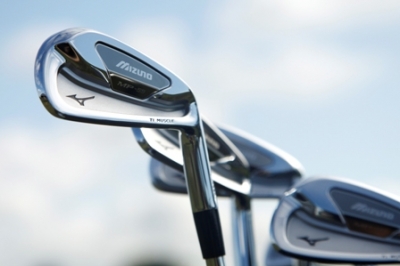 |
So unfortunately, while the MP 58 was great and the technology was really good in it – it lacked a little bit in forgiveness. There was so much weight required to hug that titanium, the sole actually got a little bit thinner than we’d wanted it to, and the MOI (Moment of Inertia) was never quite as high as we’d wanted it to be.
So the MP 58’s were really like an experiment. And it was a great club, but it didn’t reach the forgiveness levels that we thought it could until the 59’s.
GolfTheUnitedStates.com: When you talk about forgiveness from a club manufacturer/designer standpoint, what exactly do you mean? What’s ‘forgiving’ about a golf club?
Voshall: At Mizuno, we talk a lot about what we call the ‘sweet area.’ We assess the sweet area by taking a measurement of the toe-heel moment of inertia, the up-down moment of inertia, and then calculate ellipsoid (Ed note: An ellipsoid is a closed quadric surface that is a three dimensional analogue of an ellipse.) from that.
The result gives an approximate area of how forgiving it is. Obviously, the larger the toe-heel gets and the larger the up-down gets, it’s going to increase the sweet area. As the sweet area gets larger, forgiveness goes up.
Then there are the hidden things in forgiveness, like the sole width of the club. If the sole isn’t right – if the sole gets too thin – it becomes a really demanding golf club that basically doesn’t auto-correct. That’s kind of the beauty of a good sole design – regardless of how you come through the turf, the sole will help it glide through properly.
When the sole gets too thin, it can dig, or it can bounce…. There’re some handcuffs there in terms of forgiveness. But that’s kind of one of the un-measurables – where we can’t say, “this MOI number is this, or this MOI number is this….” That’s one of the un-measurables that kind of plays into forgiveness a lot.
GolfTheUnitedStates.com: How is the sole design in the MP 59’s improved from the MP 58’s?
Voshall: It’s a significantly wider sole in the 59’s as opposed to the 58’s.
The 58’s sole actually was pretty much thinner than our blades, which is kind of a mismatch there -- that our more forgiving technology club has such a thin sole. Where, with the 59’s, it’s gotten significantly thicker and it’s especially so in the heel area, which is a place that’s very important for forgiveness.
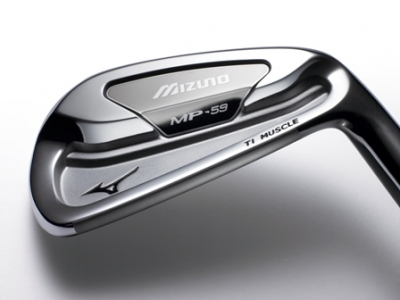 |
If the heel is too thin, that’s when it starts doing strange things when it goes into the turf.
GolfTheUnitedStates.com: The back of the MP 59 seems thicker as well.
Voshall: It is. When I talked about the 58 -- how it had the entire frame covering the titanium –that’s one of the things that held it back in terms of the MOI.
What we really wanted to focus on in the 59 was, we wanted to see if we could not ‘hug’ the titanium all the way around. And if you look at the 59 from behind, the steel is only on the toe-heel side, as well as the bottom side/sole side of the club, meaning we were able to eliminate that fourth wall – which is the steel that was towards the top-line of the club.
When you put weight up there, all that’s doing – it’s weight right in the center of the club, so that hurts moment of inertia, and it also hurts center-of-gravity depth and sweet-spot height. So, with the 59, when you look at it, it’s weight where you want it. It’s weight on the toe and heel, and it’s weight down low. That’s it.
So that’s really the key in terms of driving the moment-of-inertia up on that club.
GolfTheUnitedStates.com: Would you say the MP 59 is as easy to hit as some of your game improvement irons?
Voshall: It still doesn’t quite get to that level, because with our game improvement irons, we’re able to have the deep pocket cavities, and the really large head length.
When you get a head length from toe-to-heel that’s really long – again, that’s pushing weight away from the center-of-gravity. So, we only want to go so large with the MP series (note: Mizuno’s MP clubs are called game enhancement, while their larger, more forgiving clubs are game improvement) – we want to keep it in the player’s range. So when you look down on it, it doesn’t look overly long from heel to toe.
The MP 59 is as forgiving as we can get in a player’s club. Meaning, it’s not going to quite get to the levels of a JPX club (the JPX clubs are in the game improvement category). But for that head size, it’s still extremely forgiving.
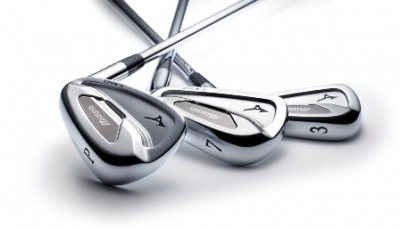 |
GolfTheUnitedStates.com: Having also tried the JPX-800 Pro irons, one thing we noticed is the distance each club hits is a little bit greater than in the MP series. Is that due to loft? Is it more of a standard loft in the MP 59’s?
Voshall: It’s a combo of things. There are two things going on with the 800 Pro’s.
The 800 Pro’s do have one degree stronger loft per club. That’s a 29-degree six-iron, 45-degree pitching wedge, versus the MP, which has a 30-degree and 46-degree. So you do have a little bit of the loft contributing to it.
But on top of that, on the 800 Pro’s, while it’s a forged club -- it’s forged out of the same material as the 59’s – we actually went back after the forging and milled the back of the face to thin it out. By doing that, the club actually has a higher COR (“Coefficient of restitution” is a measurement of the energy loss or retention when two objects collide.). That’s one of our big things on the game improvement side of things -- we’ve been focusing on ‘how do we get a higher COR on irons?’
There’s so much about COR on woods. Well, we want to increase it on irons, too. And that’s the highest COR of any forged iron that we’ve ever measured (on the JPX 800 Pro). That’s contributing to that distance gain as well.
GolfTheUnitedStates.com: We find it interesting in the industry advertising how some companies talk about maximizing distance in irons, especially since irons are supposed to only go a certain yardage. If a 10-handicap consumer goes into the golf shop, how would he choose between your game improvement clubs as opposed to your game enhancement line, the MP’s?
Voshall: What I always say, play the most forgiving thing you can stand to look down at. That’s my personal feeling. So, if you can get away with the longer head length, I think everybody would benefit from playing JPX golf clubs.
While they are longer distance-wise, they’re also dialed-in. It’s still the Pro, the forged golf clubs – you can dial that loft back to hit your distance increments. So, it’s not designed to ‘go long at any length.’
At Mizuno, as opposed to other companies, while we play the loft “game” a little bit, we haven’t played the iron length game as well. With so many of the companies, it will not only be stronger lofts, but they’ll add a half inch to the length of the club as well. So essentially, you’re just shifting the numbers on the soles of the golf club.
Our whole thing is -- play the most forgiving thing you can look down at. There are a lot of traditionalists that despise a thick sole or a thick top-line. And that’s why the MP line exists.
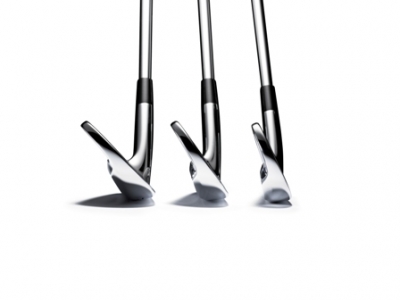 |
GolfTheUnitedStates.com: That’s describes me, pretty much. I don’t like the thick top-line on some irons. I grew up playing my Dad’s Macgregor Tourneys – and I loved them. That’s why I prefer kind of the old-style forged look.
Voshall: That’s where the MP line really keeps that traditional look at address. It’s something that we’re never going to get away from with the MP. It’s also where we want to build as much technology as possible into the back of the golf club so you don’t see it at address.
GolfTheUnitedStates.com: I haven’t actually compared the MP 59’s to the MP 58’s in terms of looks at address. Is it similar?
Voshall: What’s funny is that the 59’s are more forgiving and have a thicker sole, but they actually have slightly less offset and a slightly smaller club head. And the reason for that is – and as our clubs go from generation to generation – the 58 actually replaced the MP 57 in our line. And if you remember the 57, it was a large-headed, one-piece forged iron…
It was the last generation of our cut muscle technology.
So when we went to the MP 58, we essentially took the specs from the 57 and put them on the 58 – meaning it had the offset of the 57, the head length of the 57, the top line of the 57. But because of the handcuffs of the titanium muscle, we didn’t have as much weight to play with. So it became less forgiving than the specs would indicate, if that makes sense.
GolfTheUnitedStates.com: It does.
Voshall: So when we went to the 58, what we really wanted to do is – we wanted to re-focus this as more of a Tour club, where it had the forgiveness and look of a Tour club, but it had a little too much offset and a little too long of a head.
So the 59, while the forgiveness went up, the head length went down. The head length is smaller than the 58, and the offset is less than the 58.
And that was one of the huge things for us. While everybody loved the 58 from the shelf, it actually didn’t do great on Tour. It had a couple of Tour players playing it, but not nearly as many as we expected.
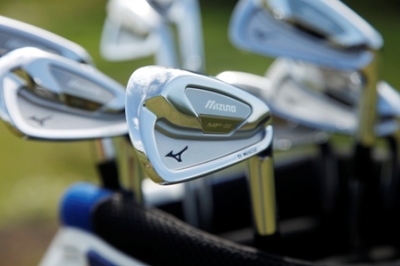 |
But since we went to the 59, we made those aesthetic corrections just to the look at address – and now Luke Donald has gone into it, Charles Howell, Jonathan Byrd, and our entire European staff. It’s been overwhelmingly successful.
GolfTheUnitedStates.com: Speaking of Luke Donald, how would you say it’s affected the company having the #1 player in the world playing the MP 59’s?
Voshall: It’s funny, because Luke is always tough to “sell.” We always build him our new stuff, and we don’t know what he’s going to go into. It’s kind of unpredictable sometimes. So, we built him the 58’s, hoping he was going to go into those, and he didn’t.
And then we built him the 59’s and he just showed up one week with them.
It caught us completely off guard, and it’s something that’s massive for us. He’s arguably the best iron player on the planet, and to have him say that he’s going to change irons from something that he had just won both orders of merit on both sides of the pond…
To move to that, it spoke volumes.
GolfTheUnitedStates.com: Looking towards the future, are you going to try and make your game enhancement irons easier to hit – like game improvement clubs?
Voshall: Our whole thing with our game enhancement side – we want to reach as many people as we can. Again, without offending you from address.
We’re going to continue to try and push that envelope and see how forgiving we can make a small golf club as opposed to the JPX side, where the head-size handcuffs are off. You can do whatever you want there.
GolfTheUnitedStates.com: In the last several years, we’ve really started preferring graphite shafts in our irons. From a layperson’s standpoint, what’s the difference between steel and graphite shafts?
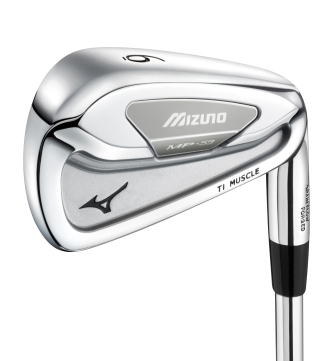 |
Voshall: It depends on which graphite you’re looking at. If you’re looking at the typical stock graphite that you see in a lot of clubs, those are massive weight differences as compared to steel – between 50 and 70 grams typically.
Whereas your Project X’s are probably 115 or 120 grams. So you’re cutting that weight in half – that’s going to be a big difference.
But you’re seeing a lot of companies… there’s a Project X graphite that’s 105 grams. I know Matrix has a new 115 gram graphite. I know UST has a new graphite that’s in the 120 range.
When you get to those, it’s going to be a lot closer in performance to steel. When you go with the really light-weight ones, you get really soft tips and they’re typically a lot spinier. So you’ll have the softer feel, but you’ll also have higher launch and more spin.
When you get into these “heavier” new ones, a lot of times, you’re going to get very similar performance to steel – and the main difference is just the shock absorption.
GolfTheUnitedStates.com: So do you see graphite as the future where irons are going as well?
Voshall: I really do. I think it’s going to be awhile, though. I think there’s the perception that steel is so much more consistent. But really, that’s not the case anymore. While there’re a lot of good things about steel, there’re a lot of great things about graphite.
There’s so much more design flexibility in them. But with the steel shaft, the only things you can do to dial in specific flexes are adjust diameter and wall thickness. Those are really the only two levers that you can pull.
With graphite, you can do diameter, wall thickness as well as the bias ply of the graphite sheets. Meaning, you can get much more intricate and detailed designs on graphite. Really, the change will happen when a major graphite company gets somebody on Tour playing it.
Those Tour guys, they’re very set in their ways as well. While the performance is there on a lot of graphite shafts, it’s a learning curve to get them to accept it.
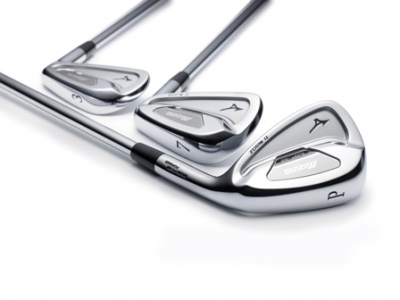 |
GolfTheUnitedStates.com: To sum up, what would you say was the one thing you were aiming for in producing the MP 59?
Voshall: The main thing for the 59 versus the 58 was we really wanted to focus on the feel of it.
With the 58, it still had a little bit of a “clicky” feel to it – it didn’t quite have the Mizuno feel. When we went to the 59, we added an additional process in which we allowed an oxide layer to form on the titanium before forging it in.
And that was something that we hadn’t done with the 58, and that was something that made it feel a lot more like a one-piece forged golf club.
We did a lot of testing, and Luke was very heavily involved in that. He tested four different variations of the MP 59 at the Tour Championship last year, and he said far and away, this is the best one.
And that’s what led to that being the process we use. And I think the feel is greatly improved.
__________________________________________________________________________
In the world of golf products, it’s hard to brag too much about any particular golf club, because all of the ones we try seem to work well.
But the MP 59’s are certainly a club that’s worthy of trying if you’re looking for the finest Japanese forging out there.
And they look darn good, too.
Details:
Mizuno MP 59 Irons
Inquire at your higher-end golf retailers and club pro shops. Available in right and left hand with a variety of custom shaft combinations.
Check out more information about Mizuno Golf products at: www.mizunousa.com.
Note: Mizuno has also introduced several other models of irons that merit a look – you can find them on the website.
Mizuno USA, Inc. is a wholly owned subsidiary of Mizuno Corporation, one of the largest general sporting goods manufacturers in the world. Mizuno USA, Inc. manufactures and distributes golf, baseball, softball, running, track & field, and volleyball equipment, apparel, and footwear for North America. Mizuno USA, Inc. is based in Norcross, Georgia.
| Related Links | Comments on this article? | |
|
Maryland National Golf Club Hollow Creek Golf Club Rocky Gap Resort PB Dye Golf Club in Ijamsville Whiskey Creek Golf Club |
E-mail Jeff Rendall, Editor: jrendall@golftheunitedstates.com |











